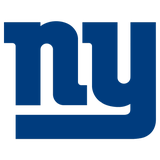
Top 5 weaknesses that continue to plague the Giants

Top five weaknesses. It is a inquiry worth doing to get at the truth of why we, as fans, cringe, mope and bawl. Compared to 2014 and 2015, the New York Giants were 6-10 and could not satisfy fans eager for their team to reach the playoffs. In comparison to 2007 and 2011, the team showed that it could not live up to its championship legacy. In a recent news release from the official Giants website, as good as the Giants have been, they will most likely fall into bad habits and not make the playoffs.
Aug 20, 2016; Houston, TX, USA; New Orleans Saints running back Mark Ingram (22) rushes against the Houston Texans at NRG Stadium. Mandatory Credit: Troy Taormina-USA TODAY Sports
1. Top Weakness: Failing to Maintain Possession
First, to top the list is the perpetual failure to maintain possession. Most notably in 2014-15, the Giants’ possession rate has been less than their opponents. Notably, an exception to this dreadful pattern is Week 1’s game in which Manning threw three touchdowns leading to a 20-19 victory of the Dallas Cowboys.
The last time the Cowboys and Giants met in 2014, the Cowboys maintained possession for a longer period and won. The Giants held the ball for 26:11 minutes and the Cowboys roughly 33 minutes. In 2015, the Giants possession ratio was nearly 2 to 1 in favor of the Cowboys. In the present season, the number is not improving that drastically.
Nevertheless, the Giants proved that they could win ballgames. According to CBS Sports’ Power Rankings, the Giants climbed the ladder from 5 to 3rd place.
NYG: 5
Movement: Up 3
NFC East: No. 5 Giants, No. 12 Eagles, No. 14 Cowboys, No. 27 Redskins
NFL Top 5: No. 1 Patriots, No. 2 Broncos, No. 3 Steelers, No. 4 Panthers, No. 5 Giants
Comments: “At 2-0, their defense is carrying them to the fast start. It’s really an improved unit.” — Pete Prisco
Most noteworthy, the ability of the Giants offense to outscore the opposition is noteworthy. As good as the Giants have been this season, the team may be falling prey to the same bad habits. Namely, not maintaining possession long enough to establish control and momentum of the game.
Ideally, a 50/50 split is what the Giants should strive for to make amends.
Nov 1, 2015; New Orleans, LA, USA; New York Giants quarterback Eli Manning (10) in action against the New Orleans Saints at the Mercedes-Benz Superdome. The Saints defeated the Giants 52-49. Mandatory Credit: Matt Bush-USA TODAY Sports
2. Declining 3rd Down Conversation Rate
Consequently, the Giants should make it a top priority concerning third down conversion rate. That number sometimes drops below 50% in games where the opposition’s is slightly above 50%. This contributes to games in which the Giants punt the ball or take reckless risks on plays when it is fourth and short.
Oct 25, 2015; East Rutherford, NJ, USA; New York Giants quarterback Eli Manning (10) throws a pass against the Dallas Cowboys in the first half during the NFL game at MetLife Stadium. Mandatory Credit: Robert Deutsch-USA TODAY Sports
3. Unbalanced Penalties vis-a-vis opponents
Third, ranking the top third weakness are penalties. Going against the grain, the Giants defense could easily slide into the habit of becoming penalty prone. As NYGiants.com reported recently, the key to the Giant’s victory against the New Orleans Saints was strong second quarter defense.
In the past two seasons, though, the Giants have played against the Cowboys and allowed a greater number of yards lost in penalties. In 2014, the number was 5-44. As a result, it is the fault of the defense for these correctable errors that prove costly.
Aug 27, 2016; East Rutherford, NJ, USA; New York Giants quarterback Eli Manning (10) passes as New York Jets defensive tackle Leonard Williams (92) defends during the first half at MetLife Stadium. Mandatory Credit: Vincent Carchietta-USA TODAY Sports
4. Unforced Errors and Turnovers
In the past two seasons, the Giants have faced the Cowboys and turned over the ball two times, which resulted in a loss. In last Sunday’s game against the Saints, Eli Manning threw three interceptions and barely clung on to a victory.
Against Carolina Panthers, these undesirable patterns repeat themselves causing the Giants to look rather amateur. Seemingly, these are mistakes that can be corrected through more focused preparation and careful reflection on past mistakes.
As a fan would pontificate on the radio or in the comment section in the vast echo chamber of the internet:
It is the worst moment to watch in particularly close games when a sloppily thrown pass eliminates a Giants scoring opportunity. Seemingly, this has been a pattern that has occurred for the Giants since time immemorial.
Nov 15, 2015; East Rutherford, NJ, USA; New York Giants wide receiver Dwayne Harris (17) breaks away from New England Patriots middle linebacker Jonathan Freeny (55) during the second quarter at MetLife Stadium. Mandatory Credit: Jim O
5. Failing to Run the Ball
Sometimes the Giants expect to make big gains but fail to settle for smaller, less risk-fraught gains by handing the ball to the running backs.
Most likely, many a Giants fan will throw an angry fit to watch Manning throw in a contested area of the field to Odell Beckham Jr.. The better solution may be to run the ball could as a way to convert the downs more easily.
Upon final review, the glass might be half-full. As experts around the United States have commented about the NFC East, this year might be another chance for Ben McAdoo to prove himself.
More from GMEN HQ
This article originally appeared on











